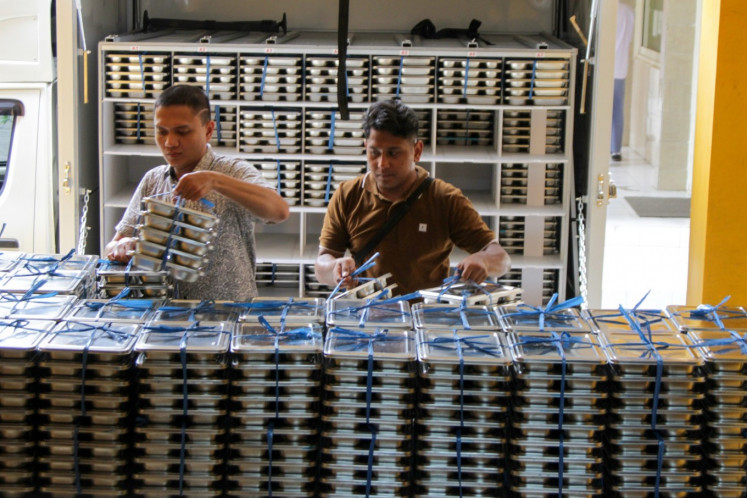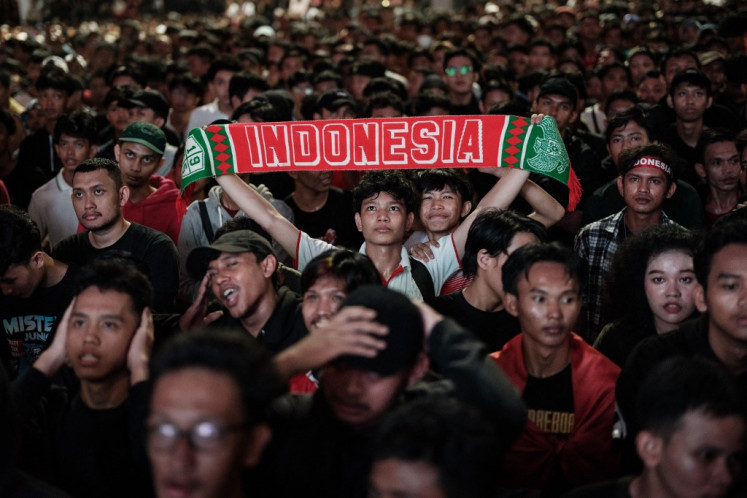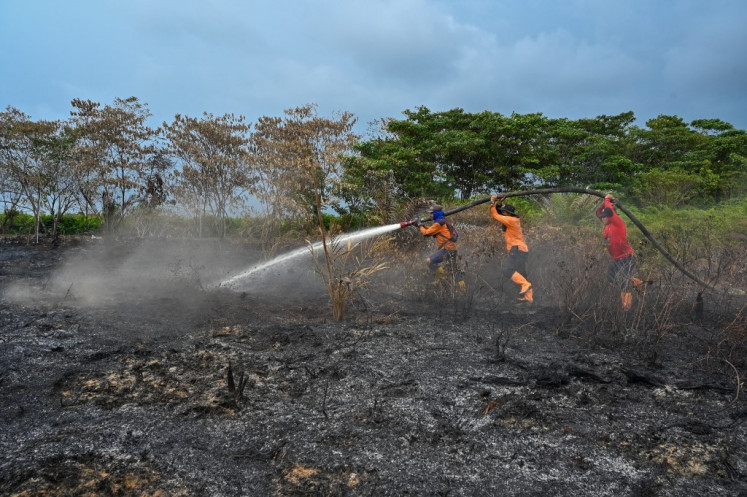Unequal access to health care persists
Change text size
Gift Premium Articles
to Anyone

M
any Indonesians are still at a disadvantage in accessing health services, even as Indonesia celebrates its 75th year of independence this year.
The poorest section of the population still has the highest percentage of people who do not get treatment when they are sick, leaving their health needs unmet, according to Statistics Indonesia (BPS).
“This can be caused by various things, such as having no money to pay medical bills or transportation costs, having no means of transportation or because of the long waiting time for services [that makes it] hard for them to get treatment,” BPS said.
A 2017 World Health Organization (WHO) and Health Ministry joint report found that the poorest have the lowest basic immunization coverage, highest infant mortality rate and the highest malaria prevalence compared with other economic groups, among a slew of other vulnerabilities.
Healthcare access remains Java-centric
But low-income communities are not alone in facing difficulties in accessing health services.
For decades, many regions outside Java have been struggling with uneven distribution of health facilities. These regions are mostly located in the eastern part of Indonesia and tend to be less developed than Java’s regions. They also tend to have high poverty rates.
For example, West Papua, which is consistently the second-poorest province, had only 16 villages and subdistricts with hospitals in 2018, out of its total 1,987 villages and subdistricts, only a slight increase from 11 villages and subdistricts in 2008, according to BPS data.
In contrast, people in Java have more room to choose health facilities. Nearly 40 percent of the total number of villages and subdistricts that had hospitals in Indonesia between 2008 and 2018 were located in Java.
Similar disparities were also found in the number of maternity hospitals, polyclinics, community health centers (Puskesmas) and pharmacies during the same period, the BPS data showed.
Regions outside Java, particularly in Indonesia’s eastern parts, also suffer from low ratios of hospital beds and health workers to population, as well as low “catastrophic incidence”, defined as a household’s or a person’s healthcare expenditure that exceeds a certain proportion of income or spending, according to a 2020 report by research group Perkumpulan Prakarsa.
“Low catastrophic incidence could indicate access to health services is inadequate due to geographical conditions, poor health infrastructure or health inequality in their ability to seek health care [that] is limited because of a poor financial situation,” it said.
Health inequity is a walk down memory lane
Gaps in the availability of health services date all the way back to Indonesia’s early years of independence.
A memoir titled “Sumbangsihku bagi Ibu Pertiwi” (My Contribution to the Motherland) depicted how health workers in Jakarta had to cope with a shortage of manpower while handling malaria and dysentery outbreaks during the early years of independence, according to history magazine historia.id.
In 1950, a decade after Indonesia’s independence, the country had only 1,200 doctors and 69 hospitals to handle an estimated population of 70 million, Gadjah Mada University (UGM) lecturer Baha Uddin wrote in a paper.
This means that Indonesia had only around one doctor for every 58,000 people, or about 0.017 doctors for every 1,000 people. By comparison, the WHO's current Sustainable Development Goals (SDG) index sets a threshold of 4.45 health workers — physicians, nurses and midwives — for every 1,000 people.
Various efforts have been made since then to expand broader access to health care, starting off with the Bandung Plan in 1951, according to the same UGM paper. It became the foundation of providing rural health services and inspired the creation of the Puskesmas, which typically have several general practitioners on staff, at least one dentist, a few nurses and a midwife, but which have fewer facilities and less equipment than hospitals.
The ratio of health workers to population has also slowly improved, albeit still well under the WHO's threshold. The figure for physicians, for instance, stood at 0.02 per 1,000 people in 1960 and gradually jumped to 0.14 in 1990 and 0.42 in 2018.
Indonesia also formed in 1968 its first health fund management agency, the BPDPK, which in 2014 became the Social Security Agency (BPJS Kesehatan) that runs the national health insurance (JKN) program.
The JKN covered about 82 percent of the population in 2019, or about 827 for every 1,000 people last year, up from 53 percent in 2014, according to BPJS data.
“The development has been rapid and it is heading in a very good direction in terms of access to health services,” said Bambang Widianto of the National Team for the Acceleration of Poverty Reduction (TNP2K).
Road to health equity still long and winding
Bambang said the country needed to tackle noncommunicable diseases such as diabetes and hypertension -- which already put the heaviest burden on the deficit-stricken JKN -- through public awareness programs if it wanted to equalize access to affordable health care.
Currently, Indonesia not only fights against such diseases, but also communicable diseases such as HIV/AIDS and reemerging infectious diseases such as tuberculosis, dengue fever and malaria.
Now, the coronavirus pandemic has laid bare the persistent healthcare gap, with unequal distribution and shortages of testing and medical supplies, hospital beds, health and lab workers hindering the COVID-19 response.
SMERU Research Institute researchers have said the virus crisis should serve as a wake-up call for the government to strengthen its communicable disease monitoring system and build a health system that favors people marginalized and living in remote regions.
“The policies cannot be one-size-fits-all,” said the researchers, urging local administrations to play a bigger role in tackling health inequity.
While Indonesia is working to improve health access, motorcycle taxi driver Afrizal Al Mubaroq, 31, a resident of Jakarta, said maintaining his health was important for him to make a living for both him and his two blind parents.
He tries to balance between working and regular eating and exercising. He rarely falls ill, except when he contracted typhoid fever in 2017, when he used his own money to cover the treatment as he had no JKN plan.
Now that he is a JKN policyholder, he values the ease of access to health care. “So that it won’t be an excess burden. Who doesn’t want cheap and accessible health services?”









